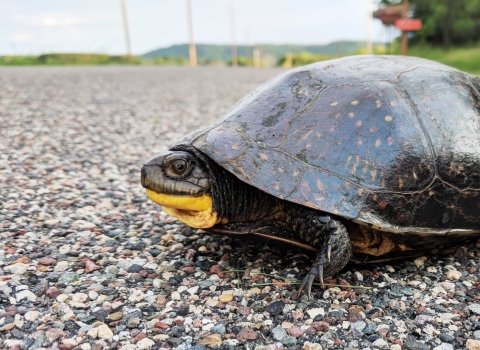BRIGHAM CITY, Utah – Today, the U.S. Fish and Wildlife Service is accepting a 30-acre conservation easement conservation easement
A conservation easement is a voluntary legal agreement between a landowner and a government agency or qualified conservation organization that restricts the type and amount of development that may take place on a property in the future. Conservation easements aim to protect habitat for birds, fish and other wildlife by limiting residential, industrial or commercial development. Contracts may prohibit alteration of the natural topography, conversion of native grassland to cropland, drainage of wetland and establishment of game farms. Easement land remains in private ownership.
Learn more about conservation easement donation west of Brigham City, Utah, from the Ferry Ranch and Farm family. Their contribution formally establishes the Bear River Watershed Conservation Area as the 565th national wildlife refuge national wildlife refuge
A national wildlife refuge is typically a contiguous area of land and water managed by the U.S. Fish and Wildlife Service for the conservation and, where appropriate, restoration of fish, wildlife and plant resources and their habitats for the benefit of present and future generations of Americans.
Learn more about national wildlife refuge .
The Ferry family – John, Ben and Joel – are long-time landowners who are passionate about conserving the land, wildlife, and resources for future generations. They are the first landowners to establish a conservation easement in this area.
“Our philosophy is we are in a unique mix of agriculture and wildlife,” said John Ferry. “We were looking at a synergistic, collaborative approach to ensure nothing in this oasis in the desert will change. There will be no threat of development, and the wetland habitat will be preserved. You have to strike a balance. Farming, ranching and conservation can all get along.”
“It is through partnerships with conservation-minded private landowners, like the Ferry family, that together, we will find our greatest success in conserving these important landscapes for both people and wildlife,” said Regional Director Noreen Walsh. “The Ferry family are private landowners who are models for conservation. Through this easement donation, they join the Service in showing that once again, working landscapes and conservation are not mutually exclusive endeavors.”
In 2013, the Service approved the Bear River Watershed Conservation Area project aimed at working with private landowners to establish voluntary conservation easements. This allows landowners to retain their property rights and continue traditional activities on the easement such as livestock grazing and haying. This significant watershed encompasses more than 4.5 million acres, of which 920,000 acres are prioritized for easements, in the states of Utah, Wyoming, and Idaho.
The Conservation Area’s diverse landscapes support more than 200 species of birds, particularly migratory birds within the Central and Pacific Flyways. It also provides habitat and important migratory linkages for many mammals, such as elk and pronghorn, and its rivers and lakes support a number of native fish species, such as Bonneville cutthroat trout.
U.S. Congressman Rob Bishop represents landowners in the Bear River Watershed Conservation Area and praised the Ferry family for their outstanding land stewardship.
“In many of the programs we have, if they are driven by local concerns and need, they can be a benefit,” said Bishop. “Land conservation projects are an example of programs, that when locally controlled, allow the agricultural community to use their land and preserve a lifestyle that otherwise would be endangered. Federal programs can be done the right way, or they can be spun out to have negative consequences. This is being done the right way. As long as local interests maintain control of this process, it can be a benefit for all.”
To protect habitat, the Service recognizes that it is essential to work with private landowners on conservation stewardship. Fee, easement and lease are the three types of acquisition generally used by the Service when acquiring lands for inclusion in the National Wildlife Refuge System.
The Service’s Refuge System is an unparalleled network of public lands and waters dedicated to the conservation of native wildlife and their habitats. With 565 refuges and 38 wetland management districts covering more than 150 million acres plus more than 418 million acres of marine national monuments, it is unrivaled as a conservation tool the world over. Refuges also are critical to the local communities that surround them, serving as centers for recreation, economic growth, and landscape health and resiliency. Every state has at least one national wildlife refuge, and there is a refuge within an hour’s drive of most major cities.
The mission of the U.S. Fish and Wildlife Service is working with others to conserve, protect, and enhance fish, wildlife, plants, and their habitats for the continuing benefit of the American people. For more information on our work and the people who make it happen in the West, connect with us through any of these social media channels: Facebook, Twitter, Flickr, YouTube, and Instagram.



